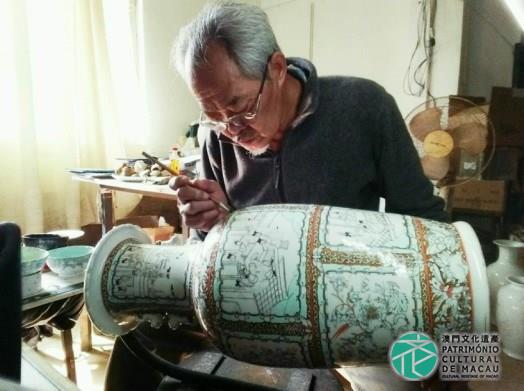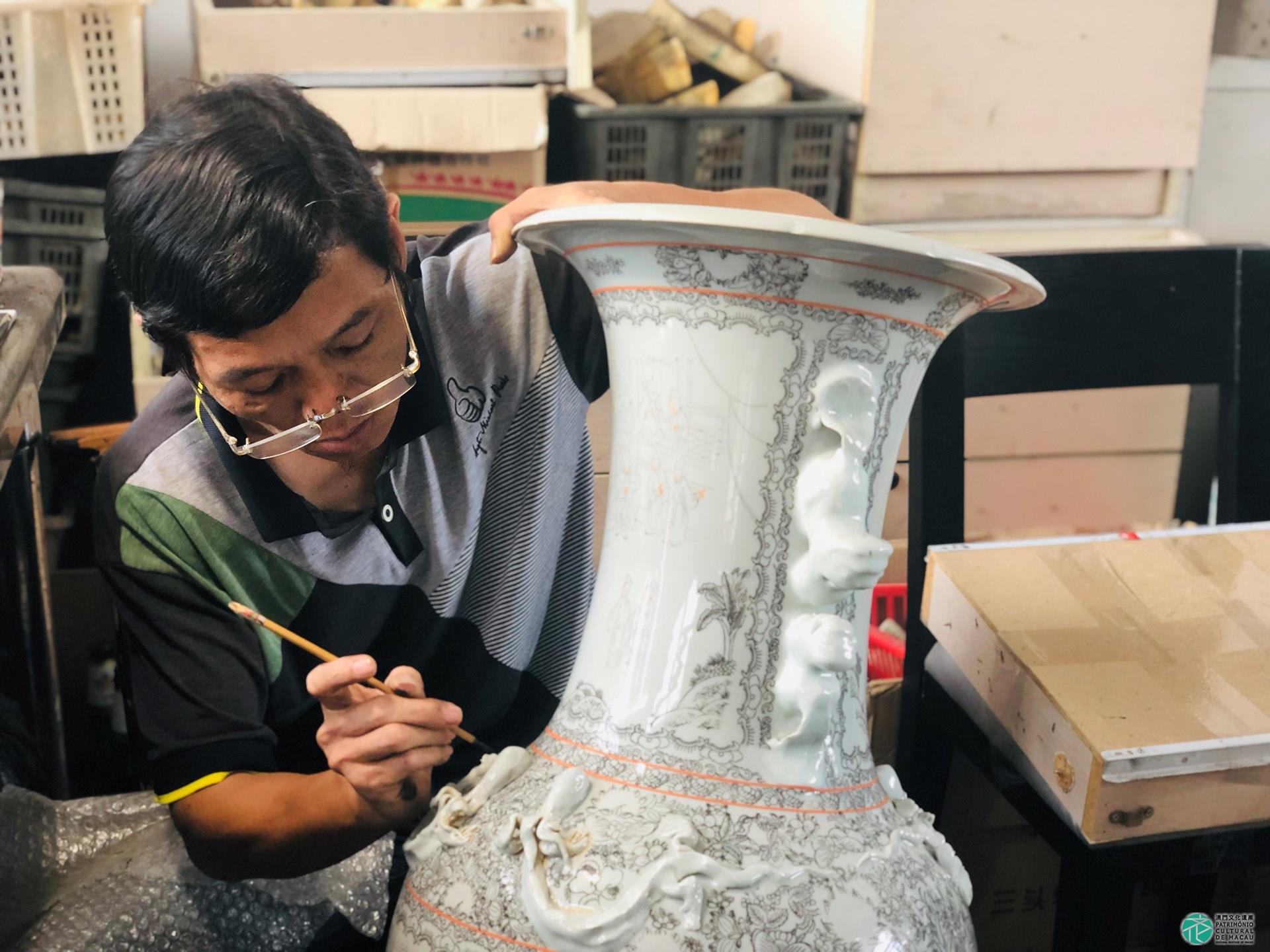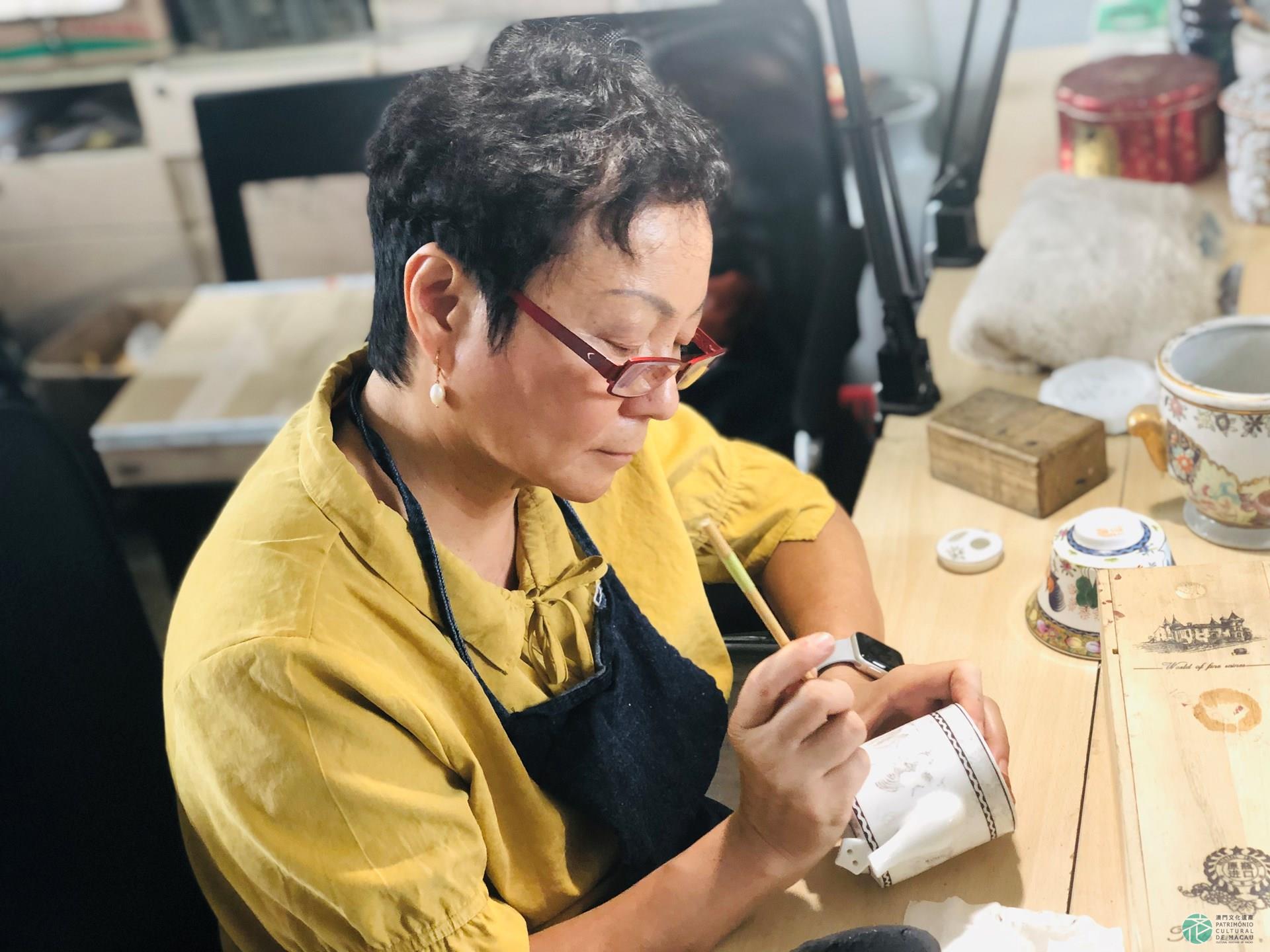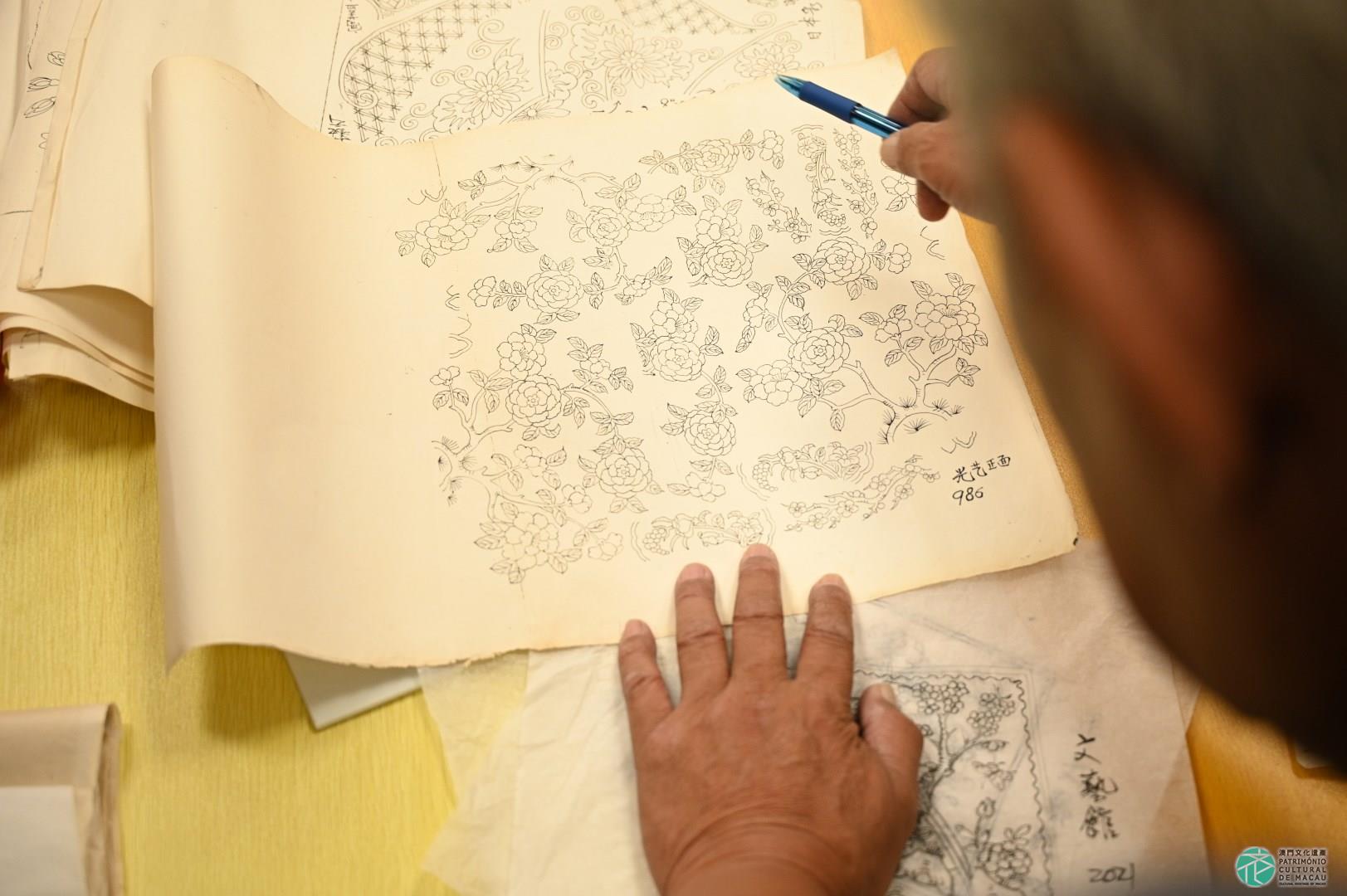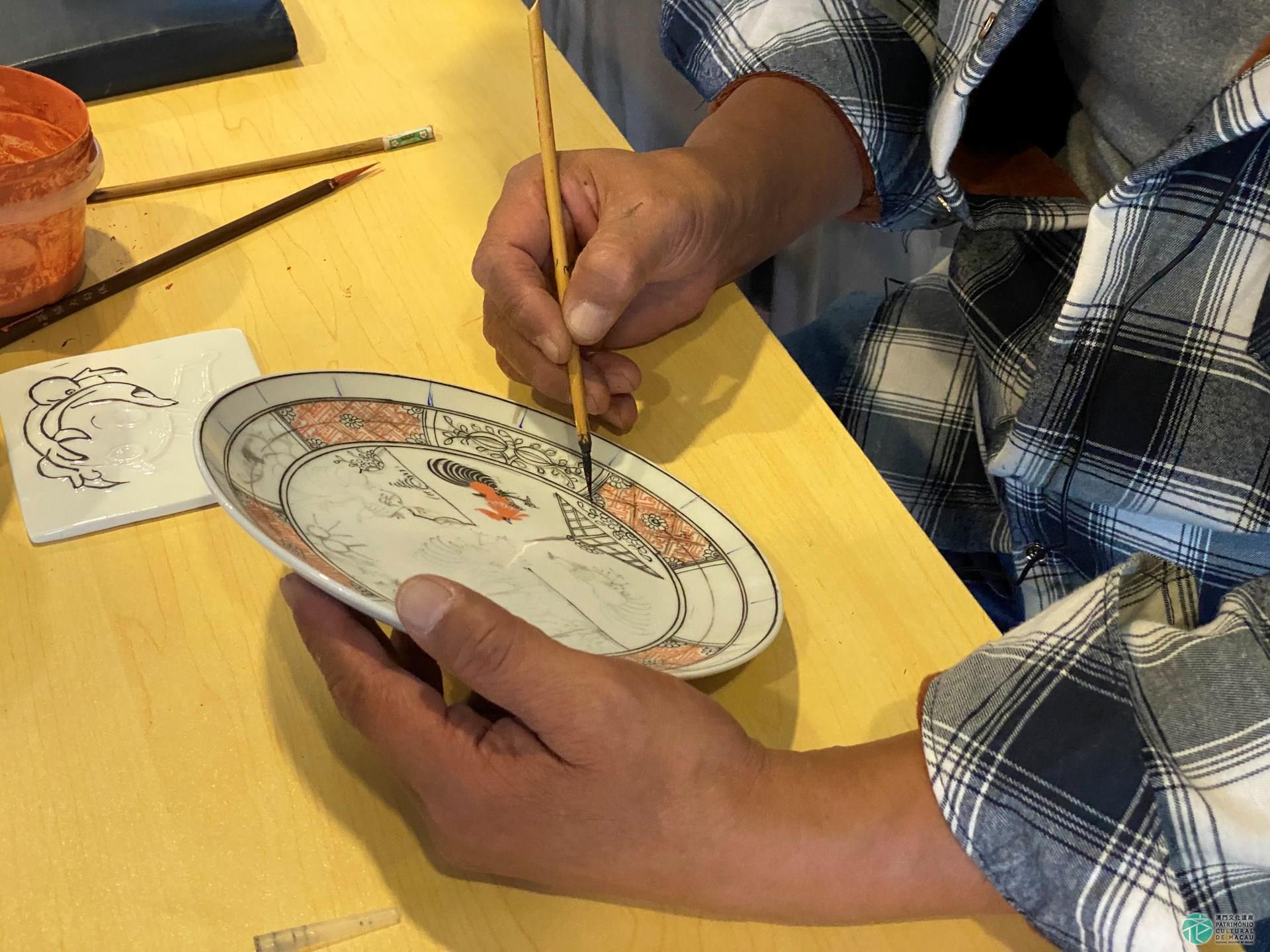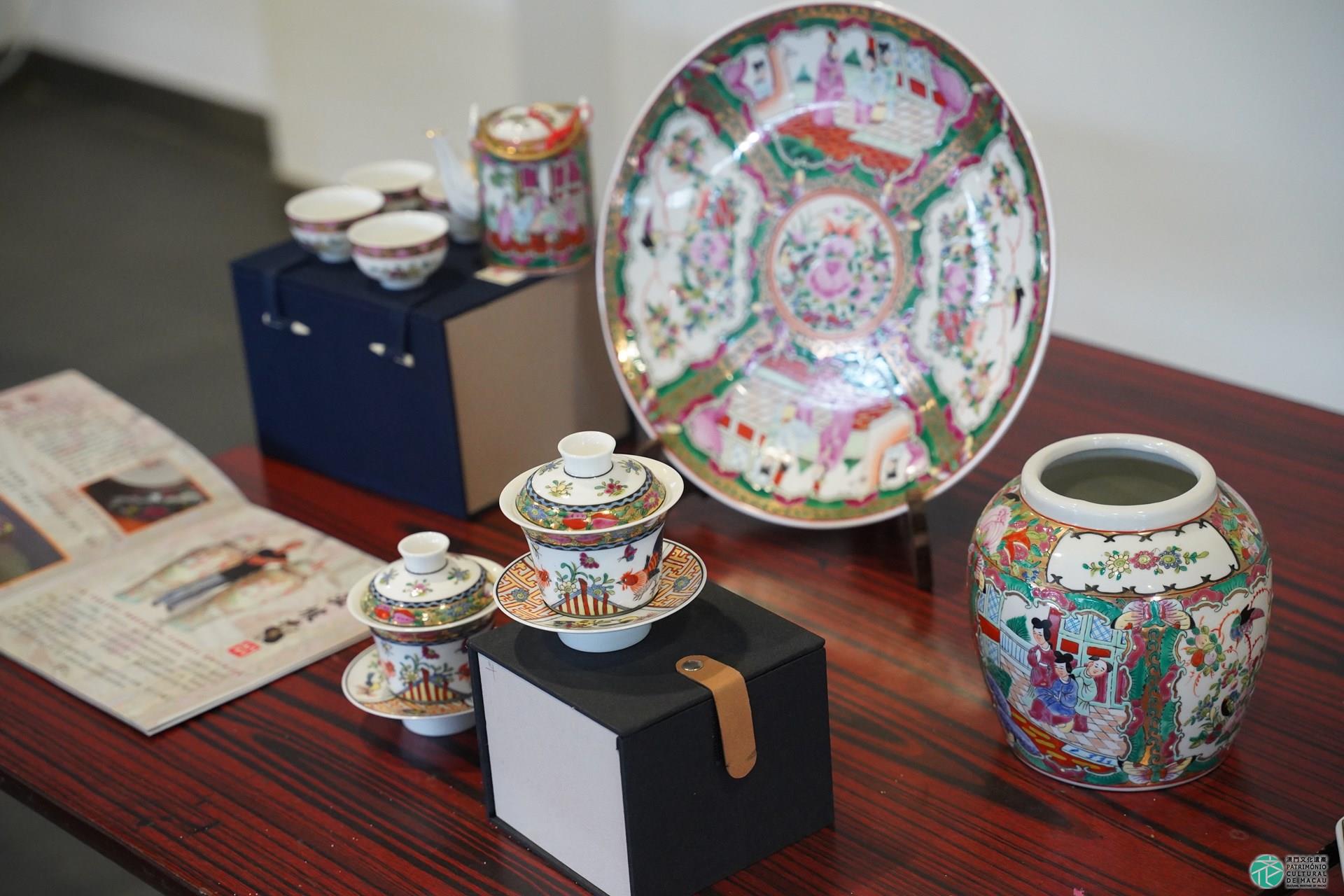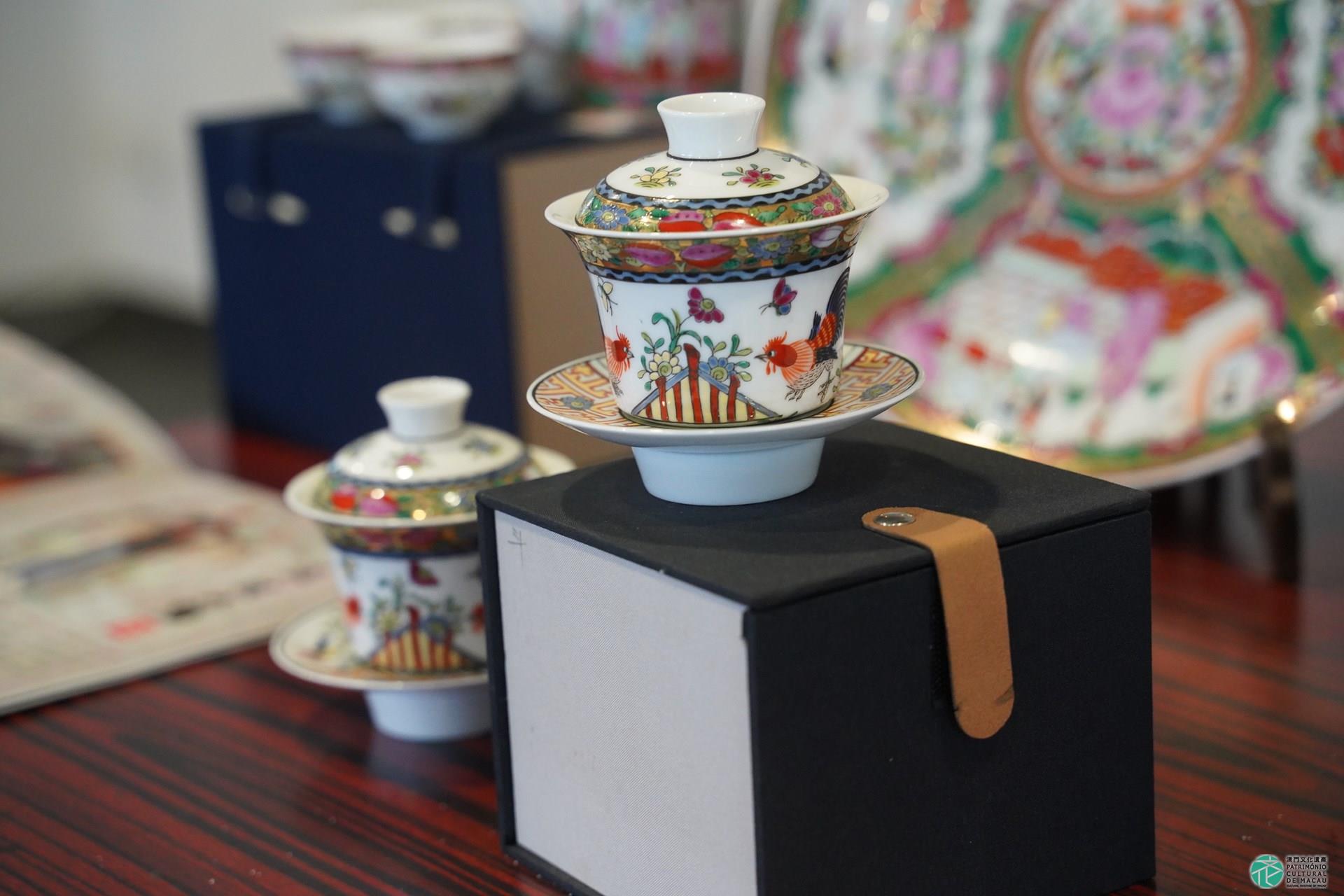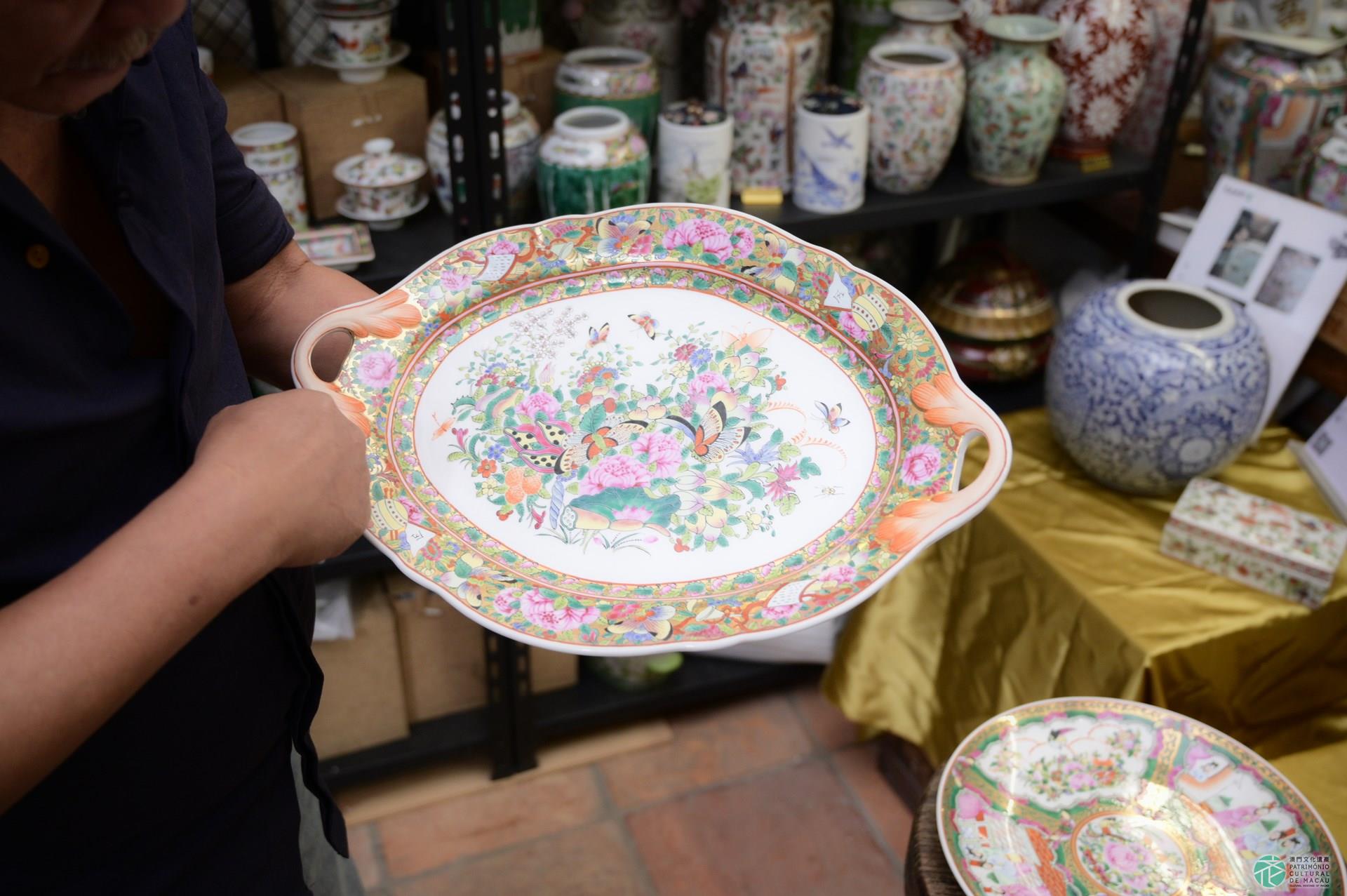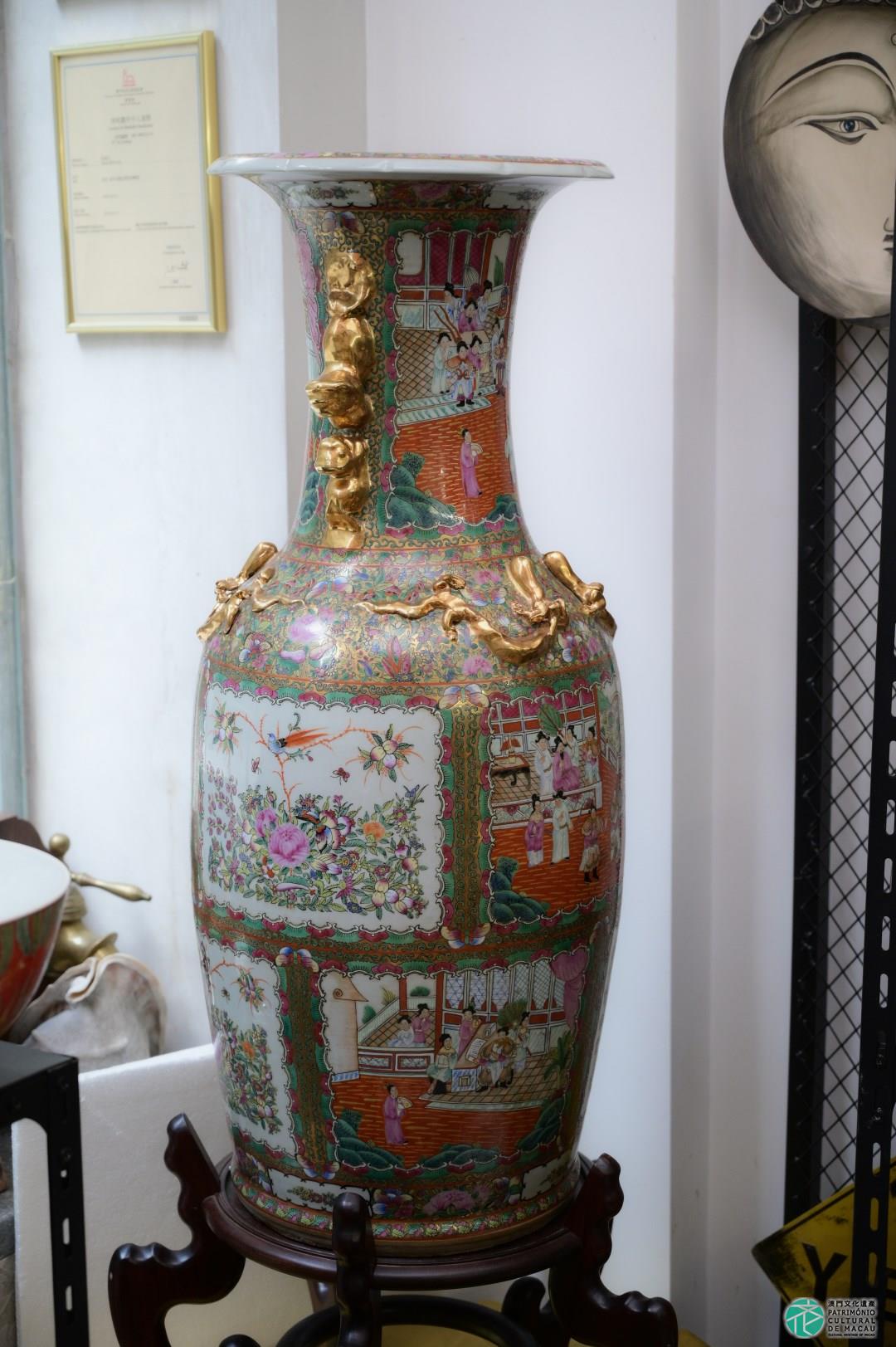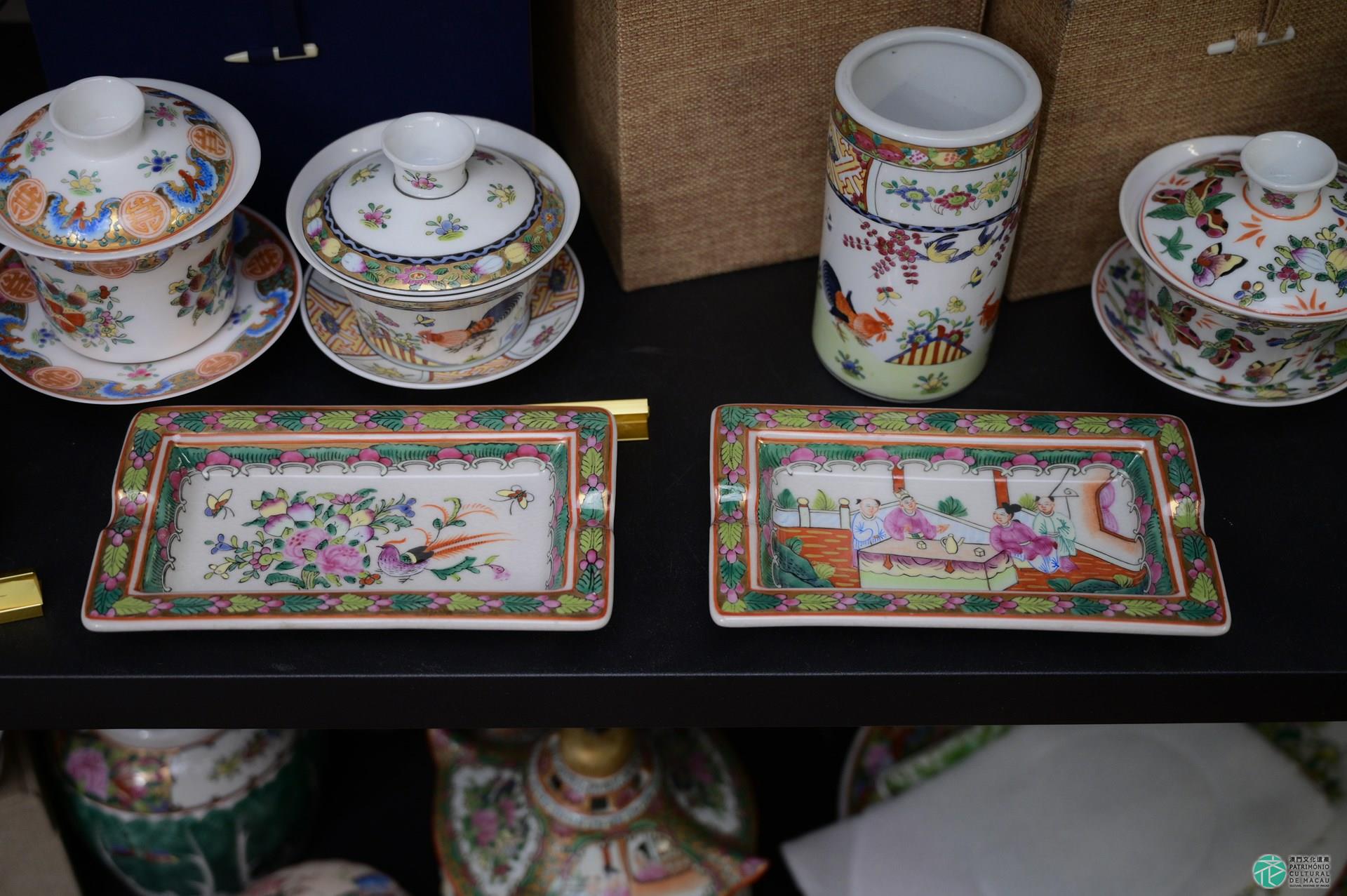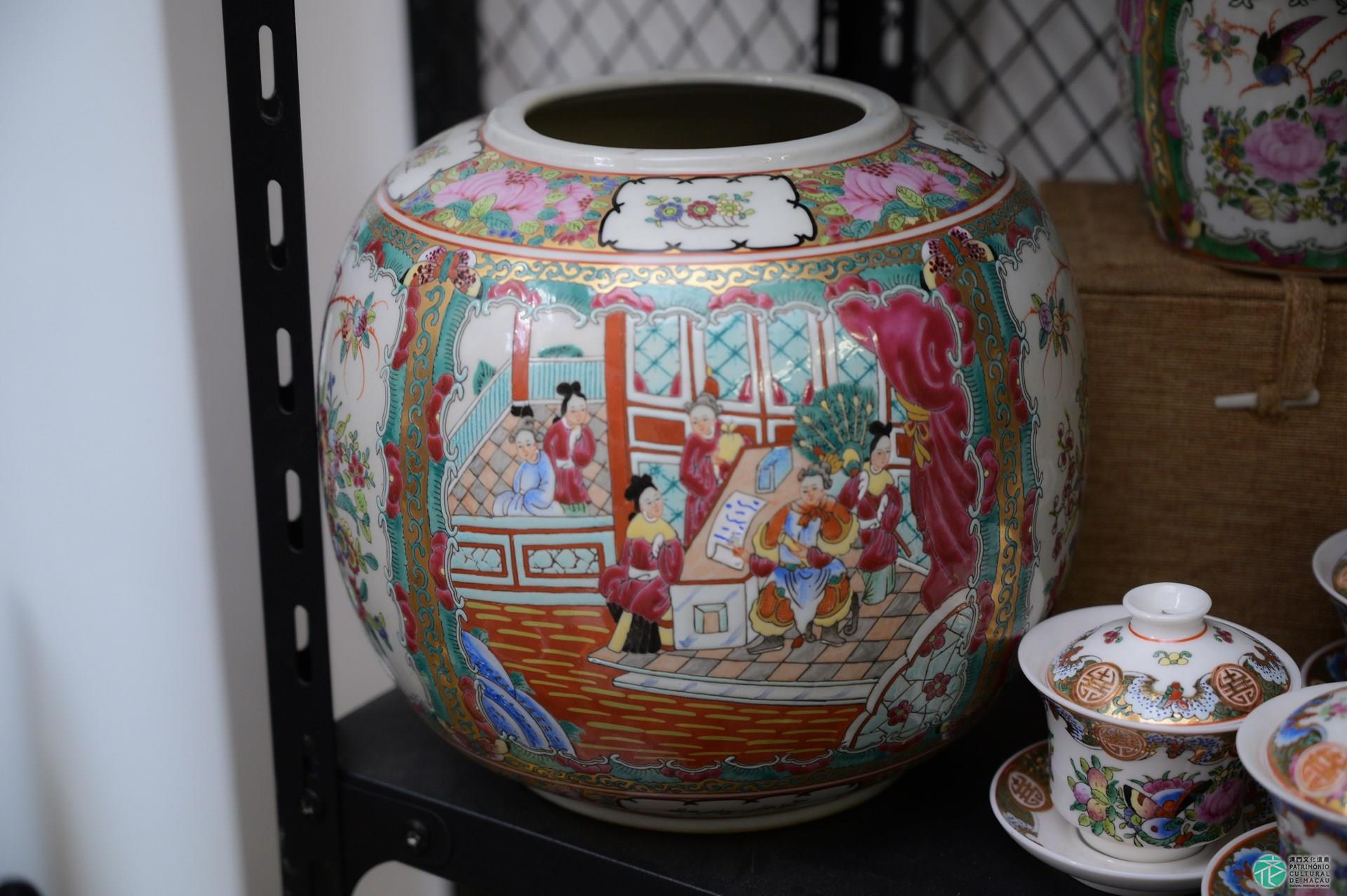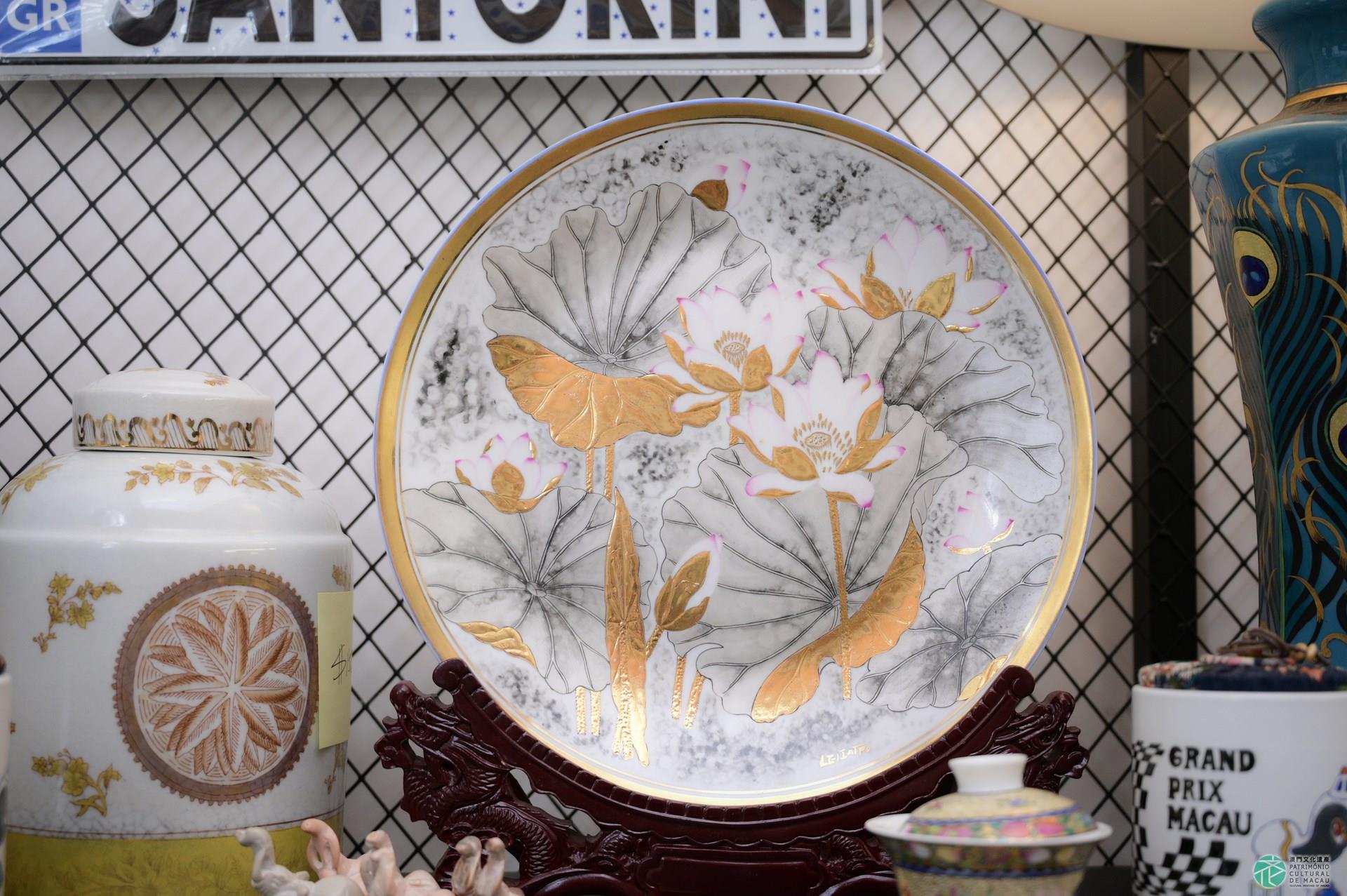Introduction:
Cantonese porcelain, also known as “Colored Ceramic of Canton”, originated in the Qing Dynasty during the reign of the Emperor Kangxi. Because of commercial restrictions that existed at the time, the city of Canton was the only port that was open to foreign traders, who made product orders, customizing the shape, style and pattern of the porcelain. This contributed to the generation and development of hand-painted decorative porcelain, making Cantonese porcelain one of the main products for export being produced in China. Due to a period of social unrest after the 1930s, many Cantonese porcelain factories were relocated to Hong Kong and Macao, where they settled and flourished. Cantonese porcelain makes use of a type of glaze decoration, where the colored motifs are applied on top of a white surface and then fixed in a second firing process, at a low temperature in a muffle kiln. It is characterized by compact compositions, bright colors, distinct decorative panels and gilding techniques. Macao’s Cantonese porcelains vary in theme and style. Some featured handcrafted colored patterns depicting the distinct folk customs of the Lingnan region, including for example, Chinese cabbages and cockfighting. Others make use of colored painting techniques that are applied through gilding, the piling of colors and also the piling of gold elements. Some others are customized making use of colored paintings that cater to European and American aesthetic styles regarding themes and colors. This variety enabled Macao’s Cantonese porcelain to become a renown export product that has representative characteristics of both Lingnan, as well as the influences from the west.
Conservation Status:
From the 1960s to the 1980s, Macao’s Cantonese porcelain production reached its heyday. Due to a favorable market environment and large demand in the 1970s, the method of production gradually developed from hand-painting into rubber-stamping, sometimes with combined methods of pressing and hand-painting. By the 1990s, and due to strong competition from factories in mainland China, the craft tended towards a decline locally. Nowadays, artisans of Cantonese porcelain are still actively engaged in the promotion of this craft, in an effort to continue the transmission and continuity of their knowledge and skills.
Heritage Value:
The manufacturing process of Cantonese porcelain involves complex and sophisticated techniques, also being representative of the legacy and creativity of traditional Chinese arts and craft culture and wisdom. Macao’s Cantonese porcelain features bright colors, exquisite painting skills and diverse decorative patterns, as well as the integration of local characteristics, particularly in regard to the fusion of Western elements and influences, which are also a good testimony about the harmonious co-existence between Chinese and Western cultures in Macao. This context also makes Cantonese porcelain a relevant element in the context of studies related to the historical and cultural exchanges between China and the West, also serving as a valuable reference about the development of local handicrafts and arts.
